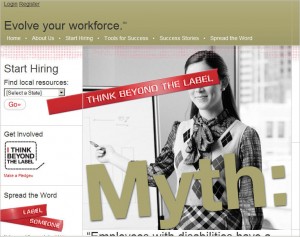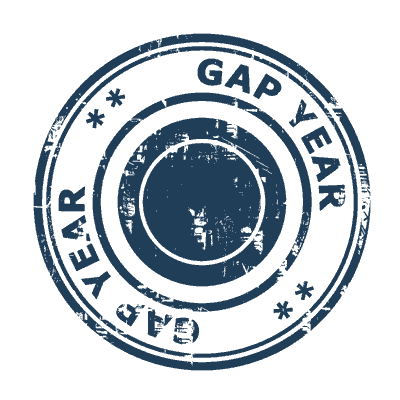
I spent a weekend recently helping my youngest job-hunt—he’s looking for a graduate software engineer role. We started with the UK top 300, those companies that regularly hire a tranche of graduates, and sifted from there…
While he focused on finding opportunities that would fit his skills and interests, I was noting some potholes developing in our user journey.
Obviously, we’d expected that the availability of jobs would drop because of the pandemic—even for software engineers. But I was interested by the approach that companies had taken to this on their websites.
Those companies who were still recruiting had mostly taken the time to explain on their web pages how the pandemic would affect the recruitment process—video interviews instead of group assessment centres, for instance. Often, they talked about how the pandemic might mean remote working. This is helpful to the candidate and shows a realistic and practical approach.
Some companies chose to put a banner at the top of relevant pages, inviting the visitor to find out more about the company’s response to the pandemic. Some companies added content to each page as a lead-in paragraph.
However, some of the companies that would normally recruit graduates, but had put in place a recruitment freeze were less helpful.
Dead-ending the candidate journey
Some of the companies who were no longer recruiting simply didn’t show any relevant jobs on the job search page. ‘Apply Now’ links from the usual pages about the graduate programme to the job search pages worked, but there were no jobs available.
- Suggestion: put a message at the top of the graduate pages to indicate that there is a recruitment freeze due to the pandemic. Bonus points for an indication of when recruitment might restart.
Some replaced the ‘Apply Now’ button with a button saying ‘Express Interest’. This enables the company to continue to build their talent pool and potentially identify outstanding candidates for future recruitment. It also lets the potential applicant know that there is no job open at the moment.
- Suggestion: invite your potential candidates to express interest—don’t let them fall into a black hole
A few companies had deliberately broken the links to the relevant pages, so that when we clicked a link to find out more about a specific graduate programme, it went nowhere. This wasn’t a 404: someone had edited the link and stripped out the destination, so that it simply reloaded the same page.
- Suggestion: create a single page that says ‘sorry, we have had to stop recruitment for the duration of the pandemic – please check back later’ and link there. This would involve only minimal extra work but, importantly, doesn’t create a hole in the website, or a dead-end in the user journey.
Another set of companies had decided it would be better to leave the relevant page in place, but to remove the content—so that we saw a header and a blank page. This leaves all the pages and links in place but is not at all helpful to the candidate.
- Suggestion: provide an explanation instead of a blank page – or redirect to a single page as above.
Patching up and making do in a recruitment freeze
This pandemic is difficult for everyone, and you are probably shorthanded.
But be helpful to the job hunter, especially if your recruitment pause is unusual. Tell them that you are not recruiting up front—don’t hide it.
If nothing else, being helpful and honest will support your employer brand.
- Bonus suggestion: put the dress code for video interviews in the FAQ, especially for developers. Most technical interviews conducted by software engineers are, in our experience, conducted in casual clothes – typically t shirts and jeans. But what if the technical interview is for a bank? Do things change if it’s all online, and not in-person? Letting the applicant know what is expected in your company is helpful to them, and reduces the number of emails to you asking about the dress code—win:win.



 It is all too easy for statements about equality and diversity to become unread boilerplate on a corporate website. After all, not many can acceptably say that their company is institutionally discriminatory, or are going to say that they deliberately recruit only Oxbridge-educated white men.
It is all too easy for statements about equality and diversity to become unread boilerplate on a corporate website. After all, not many can acceptably say that their company is institutionally discriminatory, or are going to say that they deliberately recruit only Oxbridge-educated white men.
 The gap year is a relatively new phenomenon and, despite a few strange years during the transition to the new tuition fee regimes, it’s certainly still the minority of students who take the opportunity to have a year off before going to university. For many students, the idea of a gap year consists of eight months bar-tending in the local pub and two bar-crawling in Australia. However, the reality is very much different and there are plenty of willing and extremely able school-leavers looking not just to make some cash, but to pick up some serious experience in a top company before they go to university.
The gap year is a relatively new phenomenon and, despite a few strange years during the transition to the new tuition fee regimes, it’s certainly still the minority of students who take the opportunity to have a year off before going to university. For many students, the idea of a gap year consists of eight months bar-tending in the local pub and two bar-crawling in Australia. However, the reality is very much different and there are plenty of willing and extremely able school-leavers looking not just to make some cash, but to pick up some serious experience in a top company before they go to university.